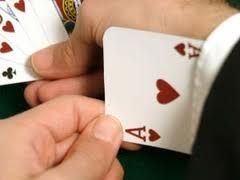Infidelity
Our Conflicted Characters
Why we are pulled in two opposite directions when it comes to cheating
Posted October 1, 2013
In my recent blog posts (here and here) I have mentioned certain studies in psychology with dramatic findings about cheating. And when we look at these studies together we find a deeply puzzling pattern that begins to emerge. 

In my recent blog posts (here and here) I have mentioned certain studies in psychology with dramatic findings about cheating. And when we look at these studies together we find a deeply puzzling pattern that begins to emerge.
Consider, for instance, the study by the psychologists Edward Diener at the University of Illinois and Mark Wallbom at the University of Washington (1976), where 71% of controls, when left alone, kept taking a test, even after a timer went off that told them to stop.
But when other participants in the experimental group were seated in front of a mirror, we see a dramatic change. Only 7% cheated by continuing to take the test after the timer went off. That’s a 64% difference!
Or consider the work of Lisa Shu at Northwestern University and her colleagues (2011). Controls had no chance to cheat on a test, got 7.79 problems correct out of 20, and were paid $0.50 per correct answer. Another group knew it would be paid the same amount, and could cheat with absolutely no chance of getting caught. There the average number of problems “solved” was 13.09 problems.
But wait a minute – if you knew that you could get away with cheating, why wouldn’t everyone say that they got all 20 problems correct?
And that’s not all. When a third group could cheat in the same way, but first signed an honor code, cheated disappeared – the group average here was 7.91 problems solved (2011: 341).
This startling effect was not specific to an honor code, either. In an earlier study, Nina Mazar and her colleagues (2008) had the same setup – controls and then a cheating group, where the number of problems “solved” was noticeably higher in the second group. But they also had a third group which could cheat but had first written down from memory the Ten Commandments before taking the test. The result? Cheating again seemed to disappear.
What is going on here? Is there one story we can tell which can explain both the increased cheating behavior in some cases and the effects of the mirror, honor code, and Ten Commandments? Not to mention the fact that people, when they cheated, tended to only do so conservatively.
I do not know if it is the correct story, but a promising one goes like this. On the one hand, most of us want to cheat to some degree or other, at least so long as we can get away with it and the benefits make it worthwhile in our eyes. That is what we find with the studies above. But in addition, we also desire to, as much as possible, still appear to be moral people both to others and to ourselves. In other words, we tend to care about seeing ourselves as honest. And that will be quite difficult to do if we are also aggressively cheating whenever the opportunity arises.
So in the first study, the mirror gives the person much less room to hide, and so makes it very difficult to see himself as honest if he were to cheat. Similarly, the Ten Commandments and the honor code serve to make a person’s moral norms fresh in her mind, and so would make it hard for her to think of herself as honest if she turns around and immediately cheats.
So this psychological story suggests that there is a deep conflict in our minds between our desires both to be honest and to cheat. Does that resonate with your own experience?


